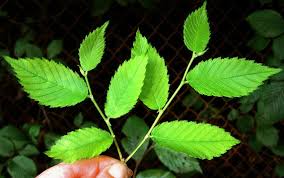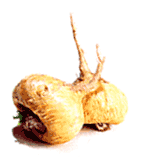 Slippery Elm: Herbal Remedies
Slippery Elm: Herbal Remedies
Aptly named, this tree is truly slippery -- but it is also elusive in another way. Once used widely by American settlers, many wild slippery elm trees have succumbed to Dutch elm disease, making the trees less plentiful than they once were.
Fortunately, slippery elms have not been lost forever: You can buy slippery elm products in health food stores. It has many uses, including as a popular herb used in herbal remedies to treat inflammations.
Uses for Slippery Elm

The species name fulva means "tawny" or "pale yellow" and refers to the light color of the pleasant-smelling powdered bark. Added to water, the powdered bark becomes a soothing mucilage. The mucilage moistens and soothes, while the herb's tannins are astringent, making slippery elm ideal to soothe inflammations, reduce swelling, and heal damaged tissues.

Mucilage is the most abundant constituent of slippery elm bark, but the tree also contains starch, sugar, calcium, iodine, bromine, amino acids, and traces of manganese and zinc. Many people eat slippery elm to soothe and nourish the body.
Slippery elm helps heal internal mucosal tissues, such as the stomach, vagina, and esophagus. It is often recommended as a restorative herb for people who suffer from prolonged flu, stomach upset, chronic indigestion, and resulting malnutrition. You can use slippery elm to soothe ulcers and stomach inflammation, irritated intestines, vaginal inflammation, sore throat, coughs, and a hoarse voice.

This information is solely for informational purposes.
IT IS NOT INTENDED TO PROVIDE MEDICAL ADVICE. Neither the Editors of Consumer Guide (R), Publications International, Ltd., the author nor publisher take responsibility for any possible consequences from any treatment, procedure, exercise, dietary modification, action or application of medication which results from reading or following the information contained in this information. The publication of this information does not constitute the practice of medicine, and this information does not replace the advice of your physician or other health care provider. Before undertaking any course of treatment, the reader must seek the advice of their physician or other health care provider.Before engaging in any complementary medical technique, including the use of natural or herbal remedies, you should be aware that many of these techniques have not been evaluated in scientific studies. Use of these remedies in connection with over the counter or prescription medications can cause severe adverse reactions. Often, only limited information is available about their safety and effectiveness. Each state and each discipline has its own rules about whether practitioners are required to be professionally licensed. If you plan to visit a practitioner, it is recommended that you choose one who is licensed by a recognized national organization and who abides by the organization's standards. It is always best to speak with your primary health care provider before starting any new therapeutic technique.
lippery Elm Preparations and DosageSlippery Elm can be used in herbal remedies to reduce swelling and heal damaged tissues. Its bark is often made into tea, and its mildness makes it easy to ingest. Below are some ideas on how to prepare and take slippery elm.
Preparations and DosageBecause slippery elm does not tincture well, its bark is powdered or cut into thin strips for tea. Like all demulcents, the bark is best prepared with a long soak in cold water. The powder is used as a healing food: Stir 2 to 3 tablespoons into juice, pureed fruit, oatmeal, or other foods. You can also mix slippery elm powder with hot water, bananas, and applesauce to prepare an oatmeallike gruel that can soothe an inflamed stomach or ulcer.
The powder can also be used in rectal and vaginal suppositories to soothe inflammation of these tissues. For treating a simple sore throat or cough, try slippery elm lozenges, which you can make yourself or buy in health food stores and some pharmacies.
Precautions and Warnings
None. Slippery elm is considered safe, even for babies, the elderly, and pregnant women.
of Slippery Elm
Slippery elm is usually well tolerated. Whether taking it in tea, as a lozenge or in another form, slippery elm's mild nature makes it a useful herb to treat inflammation and its resulting discomfort.
Jennifer Brett, N.D. is director of the Acupuncture
Institute for the University of Bridgeport, where she also serves on the faculty for the College of Naturopathic Medicine. A recognized leader in her field with an extensive background in treating a wide variety of disorders utilizing nutritional and botanical remedies, Dr. Brett has appeared on WABC TV (NYC) and on Good Morning America to discuss utilizing herbs for health.This information is solely for informational purposes. IT IS NOT INTENDED TO PROVIDE MEDICAL ADVICE. Neither the Editors of Consumer Guide (R), Publications International, Ltd., the author nor publisher take responsibility for any possible consequences from any treatment, procedure, exercise, dietary modification, action or application of medication which results from reading or following the information contained in this information. The publication of this information does not constitute the practice of medicine, and this information does not replace the advice of your physician or other health care provider. Before undertaking any course of treatment, the reader must seek the advice of their physician or other health care provider.Before engaging in any complementary medical technique, including the use of natural or herbal remedies, you should be aware that many of these techniques have not been evaluated in scientific studies. Use of these remedies in connection with over the counter or prescription medications can cause severe adverse reactions. Often, only limited information is available about their safety and effectiveness. Each state and each discipline has its own rules about whether practitioners are required to be professionally licensed. If you plan to visit a practitioner, it is recommended that you choose one who is licensed by a recognized national organization and who abides by the organization's standards. It is always best to speak with your primary health care provider before starting any new therapeutic technique.


.jpg)
.jpg)
.jpg)
.jpg)
.jpg)
